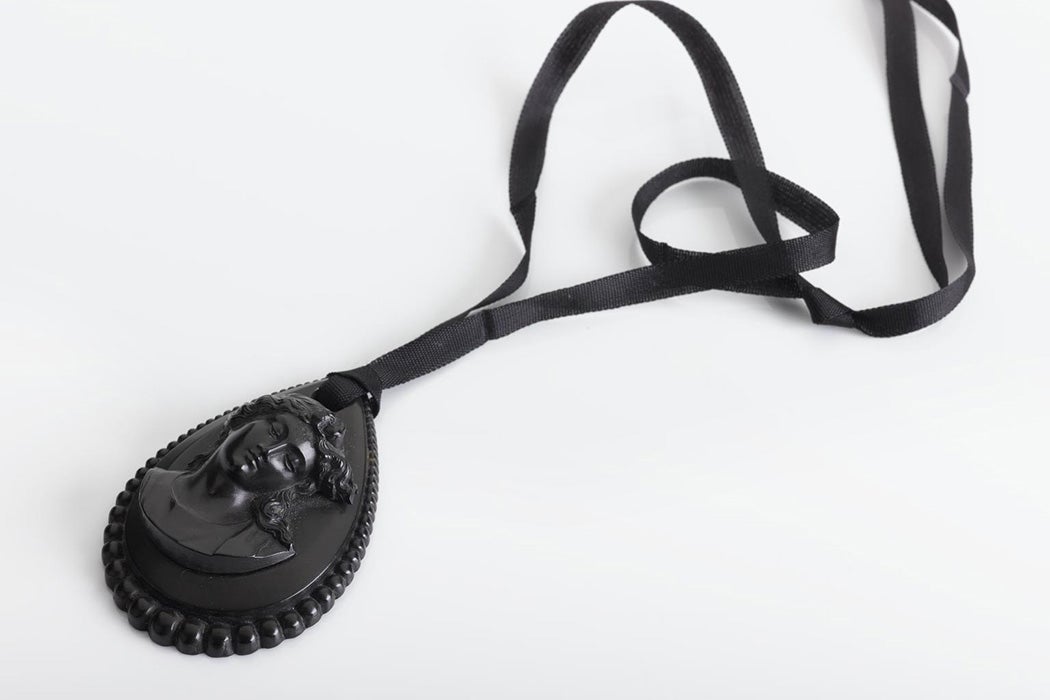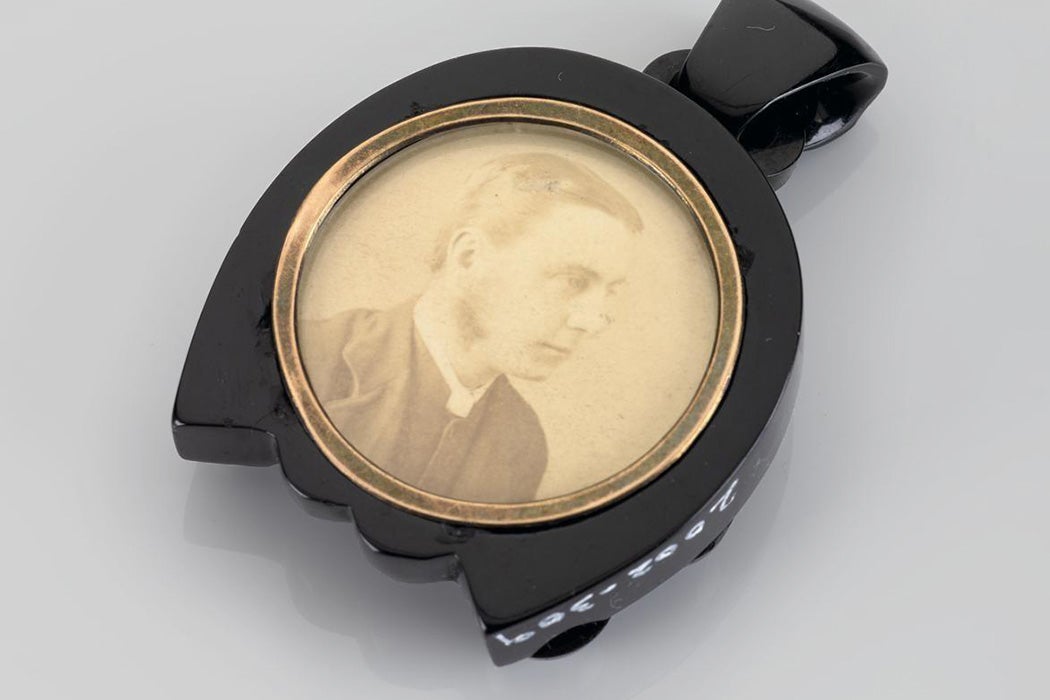In the Victorian era, mourning was more than an emotional experience; it was a commercial powerhouse. “The nineteenth century saw the emergence of a new economic activity, the ‘funeral industry,’” write Stuart Rawnsley and Jack Reynolds.
The activities of a whole series of craftsmen and traders—drapers, stonemasons, joiners and cabinet makers, caterers, hackney carriage proprietors, coachmakers, gardeners and florists—were stimulated. An entirely new occupation—that of undertaker—came into existence.
The bereaved were obligated to wear black, in some cases for up to a full year, so a death in the family could mean a whole new wardrobe. As literature scholar Rebecca N. Mitchell explains, it was an age of mourning warehouses, with vast shopping centers like Jay’s Mourning Emporium of London ready to kit the bereaved out in everything from the plain, black matte gowns suitable for deep mourning to fashionably striped “quarter-mourning” attire.
The requirements of mourning even extended to underwear. As one Buckingham palace maid of honor bemoaned:
I am in despair about my clothes, no sooner have I rigged myself out with good tweeds than we are plunged into the deepest mourning…It is a lesson, never to buy anything but black.
Dour though they were, the accoutrements of mourning could be quite beautiful: gowns of sleek black moire silk, shadowy veils, and coils of chestnut hair set into golden rings. For jewelry, jet was particularly prized. A silky black stone formed from the fossilized remains of ancient driftwood, jewelers carved into delicate chains, earrings, and pins, like drops of glimmering oil hanging around the bodies of the bereaved.

But not everyone could afford jet. Middle- and lower-class Victorians availed themselves of a surprising substitute: black rubber. Yes, the Victorians wore rubber chains as a somber symbol of bereavement. Perhaps it helped that the material was dignified with the names suggestive of precious stones: they called it “ebonite” or “vulcanite.”
More importantly, the vulcanization of rubber was a new and somewhat mysterious process. As Cai Guise-Richardson writes, “Manufacturers knew little about how vulcanization worked chemically before 1900.” The curing of rubber to create stable forms, both elastic and non-elastic, called for a complex combination of chemicals and heat. “Rubber was a cheap industry to enter,” note Richardson, but “it remained an easy industry to exit as well,” thanks to the uncertainties of the treatment.
In the nineteenth century, vulcanized rubber didn’t have quite the same industrial associations it does today (Richardson points out that Goodyear’s 1844 vulcanization patent application focused on a textile production technique, not the tires and belts associated with the name today). From the vantage point of the twenty-first century, a vulcanite head ornament with a thick, wraparound chain might suggest an assembly line; but to the Victorians, it would have hinted at the solemn dignity of jet. Similarly, a black cross, with “plasticky” molded roses, now looks like something that might drop out of a Gashapon. But jet, like rubber, is surprisingly light and warm to the touch. It was the very same tactile qualities that we now associate with “cheapness” and “tackiness” that made rubber such an ideal substitute.
Weekly Newsletter
Mitchell argues that the prevailing obsession with mourning was mired in uncomfortable contradictions. On the one hand, not wearing mourning clothes would suggest a disturbing lack of feeling. On the other hand, expressing your grief appropriately required quite a bit of shopping—a suspiciously pleasurable and sensual experience. As the satirical magazine Punch put it, “the mourning fashions are now so pretty that the loss of a husband is no longer the terrible calamity it once was.”
The embrace of rubber jewelry seems to demonstrate those same contradictions: on the one hand, it was a cheap way to mimic expensive fashions—a kind of grief-stricken “keeping-up-with-the-Joneses.” On the other hand, the ornaments evoked a seductive sensuality. Perhaps it was that warmth that jet and rubber both share—their almost flesh-like quality—that made them so comforting for people mourning the loss of a loved one’s touch.
Support JSTOR Daily! Join our new membership program on Patreon today.







